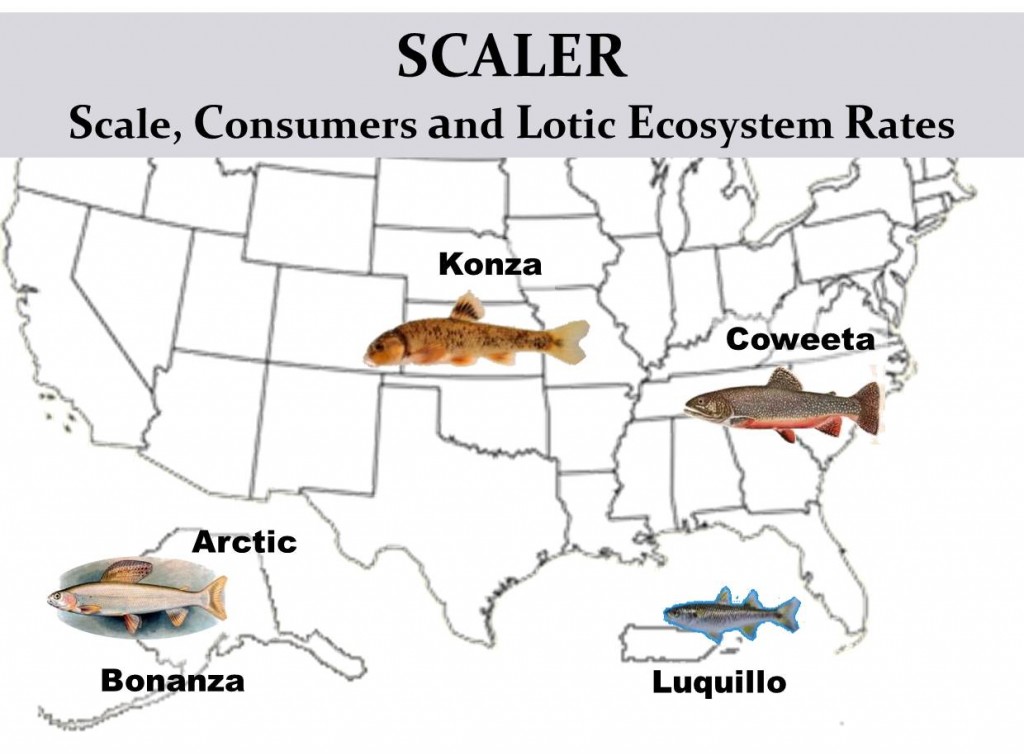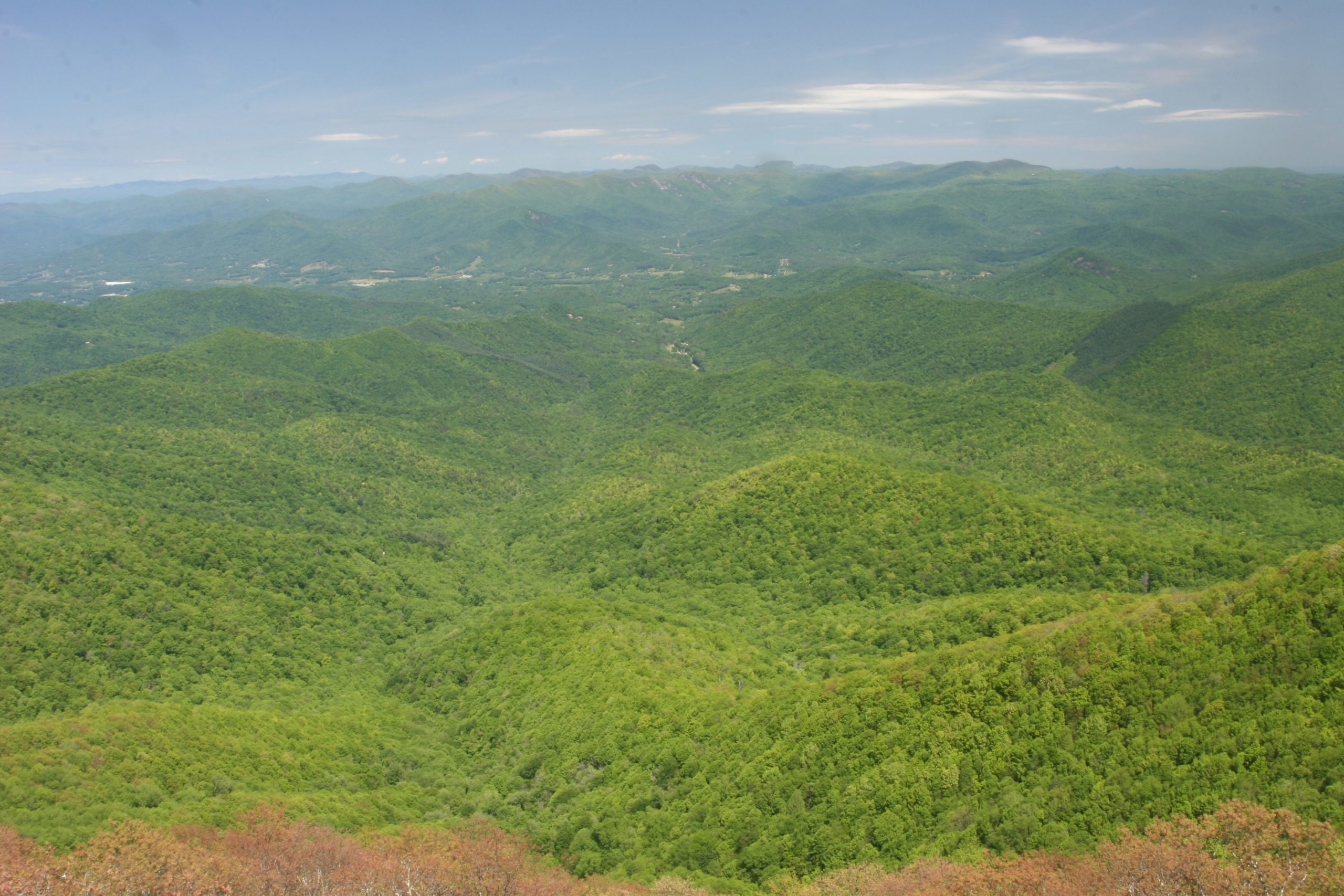This research addresses the following questions:
- What can we learn about patterns in primary productivity response to temperature across biomes?
- How do resources and patterns in stream physical characteristics differ across biomes?
- Can measurements of ecosystem function taken at small scales be extrapolated to provide information on carbon and nutrient fluxes at river network scales?
Project overview
This NSF-funded project (Scale, Consumers, And Lotic Ecosystem Rates, acronym = SCALER) was conducted in tropical forest, temperate mountainous forest, prairie, northern boreal evergreen forest, and tundra areas. Streams in each of these five areas were examined at scales of centimeters to 10’s of meters in small, medium, and large streams. Rates of stream metabolism (photosynthesis and respiration) and nutrient uptake were measured and the results were linked to the scale of watersheds and regions by modeling.
We found that resources change in their nutrient and carbon content somewhat predictably across stream networks, but differ by biomes, indicating potentially different nutrient and carbon limitation (Farrell et al. 2018). Physical stream characteristics exhibited variability within stream networks, which differed across biomes (Ruegg et al. 2016). The rich dataset of temperature and primary productivity and respiration that was collected enabled an analysis that indicates that increased temperatures are predicted to result in decreased net primary production (Song et al. 2018).


